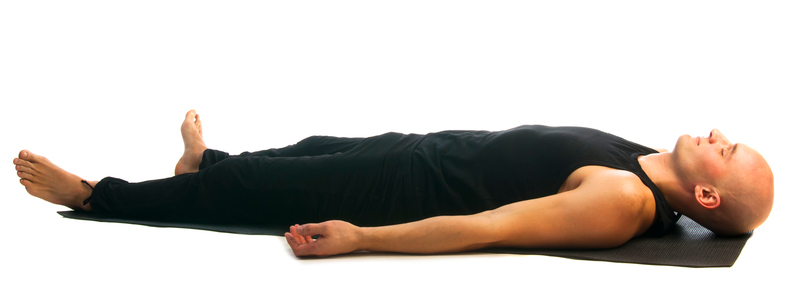
The practice of meditation can be called religious or secular. It has evolved through time. It was originally used to describe spiritual practices but is now commonly used in a double sense. Meditation is often misunderstood. You will find the answers here. Here are some thoughts to help you determine if meditation can be considered religious. Meditation is often viewed as a form or worship. This is false. The practice is nonreligious and is suitable for anyone.
There are many types of meditation. Many of them are religiously based, but not all are recognized as such by all faiths. The early Christian faith relied on repeated prayer and synchronized breath. Eastern Orthodox traditions and the Jesuit tradition use icons for meditation. Other Buddhist and Western medical practitioners use imagery and imagination to internalize the teachings of Christ. Whatever type of meditation is used, it can be considered religious. You can read a book, or look online to find out more about the origins of meditation.

Meditation and Buddhism are not connected in any way. The practice is only for the brain and doesn't require any religious beliefs. However, it is a very popular activity that has existed for many centuries. It helps strengthen the mind, which is essential for its development. There are many different types of meditation. Each type serves a purpose. Meditation, no matter its origin, is a powerful tool in mental health.
Meditation is sometimes considered a form prayer. Prayer is defined differently depending on its practice. Prayer can be described as a plea to a divine entity. It also involves dialogue. There is also an expansive definition of prayer. It involves shaping the mind and cultivating qualities such as immeasurable love. Meditation can be viewed as a religion. The difference between prayer and meditation is important. However, meditation can still be a powerful technique for healing, clearing your mind and reaching insight.
Meditation is a process that differs for everyone. While it is not religious, it can be used for spiritual purposes. It can help people concentrate on a certain thought. It can be used to achieve a peaceful mind. It can be used as a tool to focus your attention on a particular object, such as a flower, or for other purposes. This is a powerful tool to help you reach your goal.

Meditation is not a religion. It is a tool for transformation that can be used for many purposes. Meditation is not only a way to express yourself, but it is also grounded in a good set values. Meditation has two goals. One is to improve your life, to be a better person and to spread happiness to others. If this is not your purpose, it isn't religious.
FAQ
What is the problem with BMI?
BMI is the acronym for Body Mass Index. It measures body fat based upon height and weight. The following formula is used to calculate BMI:
Divide the weight in kilograms by the height in meters squared.
The result is expressed in a number between 0 - 25. Scores between 0 and 25 indicate obesity. A score of 18.5 indicates overweight. A score of 23 indicates obesity.
A person of 100 kg with a height of 1.75m will have 22 BMI.
How does an antibiotic work?
Antibiotics are medications that kill harmful bacteria. Antibiotics can be used to treat bacterial infection. There are many types and brands of antibiotics. Some are taken orally, some are injected, and others are applied topically.
People who have been exposed are often given antibiotics. One example is if someone has had chickenpox and wants to prevent shingles. A penicillin injection might be given to prevent pneumonia in someone who has had strep.
If antibiotics are to be administered to children, they must be prescribed by a doctor. Children are at greater risk of developing side effects from antibiotics than adults.
Diarrhea, the most common side-effect of antibiotics, is probably diarrhea. Other possible side effects include stomach cramps, nausea, vomiting, allergic reactions, headaches, dizziness, and rashes. Most of these symptoms disappear after the treatment is completed.
How to measure your body fat
A Body Fat Analyzer (BFA) is the best method to measure bodyfat. These devices are used for measuring the percentage of body fat in people who want to lose weight.
Exercise: Good or bad for immunity?
Exercise is good to your immune system. Exercise increases white blood cell production, which helps fight off infection. Your body also gets rid of toxins. Exercise helps prevent diseases like cancer and heart disease. Exercise also helps to reduce stress levels.
But, too much exercise can lead to a weakening of your immune system. You can cause muscle soreness by working out too hard. This causes inflammation, swelling, and can even lead to death. Your body will then produce more antibodies in order to fight infections. Problem is, extra antibodies can trigger allergies and other autoimmune conditions.
So, don't overdo it!
Statistics
- The Dietary Guidelines for Americans recommend keeping added sugar intake below 10% of your daily calorie intake, while the World Health Organization recommends slashing added sugars to 5% or less of your daily calories for optimal health (59Trusted (healthline.com)
- WHO recommends consuming less than 5% of total energy intake for additional health benefits. (who.int)
- Extra virgin olive oil may benefit heart health, as people who consume it have a lower risk for dying from heart attacks and strokes according to some evidence (57Trusted Source (healthline.com)
- According to the Physical Activity Guidelines for Americans, we should strive for at least 150 minutes of moderate intensity activity each week (54Trusted Source Smoking, harmful use of drugs, and alcohol abuse can all seriously negatively affect your health. (healthline.com)
External Links
How To
What does the "vitamins” word mean?
Vitamins are organic compounds that can be found in foods. Vitamins are necessary for us to absorb nutrients in the foods we consume. Vitamins are not made by the body, so they must be obtained through food.
There are two types of vitamins: water soluble and fat soluble. Water-soluble vitamins dissolve quickly in water. Vitamin C,B1(thiamine), B2 (2riboflavin), and B3 (3niacin), as well as vitamin C,B1, B2 (riboflavin), and B3 (niacin), vitamin B6 (pyridoxine), vitamin folic acid (biotin), pantothenic, and choline are examples. Fat soluble vitamins are stored in the liver and fatty tissue. Vitamin D, E, K and A are some examples.
Vitamins can be classified according to biological activity. There are eight major categories of vitamins.
-
A – Essential for normal growth, and the maintenance of good health.
-
C - important for proper nerve function and energy production.
-
D - necessary for healthy bones and teeth.
-
E is required for good vision and reproduction.
-
K - required for healthy muscles and nerves.
-
P - vital for building strong bones andteeth.
-
Q - aids digestion and absorption of iron.
-
R - necessary for making red blood cells.
The recommended daily allowance for vitamins (RDA) varies based on gender, age, and physical conditions. RDA values are set by the U.S. Food and Drug Administration (FDA).
For adults aged 19 and older, the RDA for vitamin B is 400 micrograms daily. Because it is essential for the development of the fetus, pregnant women should consume 600 micrograms per daily. Children ages 1-8 require 900 micrograms per day. For infants younger than one year, 700 micrograms are required daily. However, this number drops to 500 micrograms each day for children aged 9-12 months.
Children aged between 1-18 years require 800 micrograms of sugar per day, while overweight children need 1000 micrograms. Children who are underweight receive 1200 micrograms every day to meet their nutritional requirements.
Children ages 4-8 years who have been diagnosed with anemia need 2200 micrograms per day of vitamin C.
Adults over 50 years of age need 2000 micrograms per day for general health. Women who are pregnant or breastfeeding need 3000 micrograms per day due to increased nutrient requirements.
1500 micrograms are required daily by adults over 70 because they lose approximately 10% of their muscle each decade.
Women who are pregnant or nursing need more than the RDA. Pregnant mothers need 4000 micrograms per daily during pregnancy and 2500 after giving birth. Breastfeeding moms need 5000 micrograms each day when breastmilk production occurs.